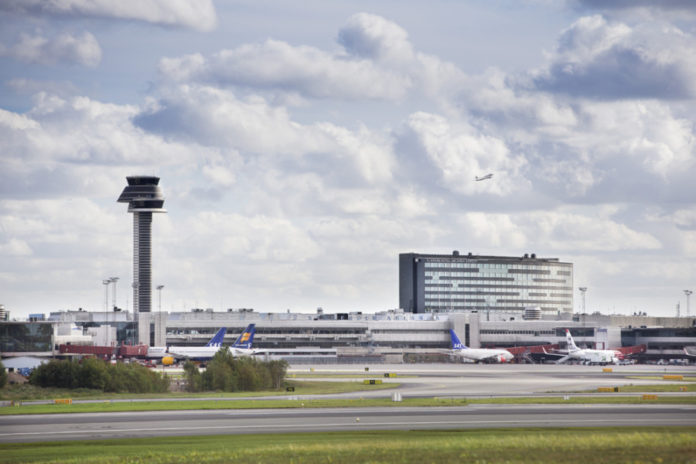

Cargo volumes have increased 10.6 per cent in the first half of 2017 at Stockholm Arlanda Airport with intercontinental contributing to the growth, Swedavia cargo director, Ylva Arvidsson tells Air Cargo Week.
She says the cargo business is “doing great” and cargo capacity continues to expand with Singapore Airlines launching direct Stockholm – Singapore flights and Air India services to New Delhi. E-commerce imports from China are also increasing, growing 60 per cent in July.
Arvidsson says: “We are also optimistic for the next year and hope for more intercontinental passenger flights. The air cargo market in Sweden is quick to support direct capacity.”
Swedavia, a state owned company that operates 10 airports across Sweden, is working on expanding capacity across its airports, and there are substantial plans for Arlanda.
Arvidsson says: “During the fall we will work together with our Real Estate department to plan for the future Cargo and Logistics Area. On the passenger side Stockholm Arlanda Airport is also growing very fast and the current capacity increases may be followed by further expansion of the terminals in the years ahead.”
Arlanda is the air cargo hub for Sweden, located where the bulk of Sweden’s export cargo originates. Arvidsson says there is a good balance between exports and imports, at 55/45, and a mix of commodities including machinery, spares, pharmaceuticals and salmon. The airport is also open 24 hours a day, 365 days a year.
She says: “We have three cargo handling companies and most Swedish agent’s head offices are located here. We are perfectly located to serve Sweden, Norway, Finland and the Baltic countries as there are scheduled truck feeder services from a number of suppliers.”
Arvidsson sees the shift to more sensitive cargo continuing to grow, with an increasing number of intercontinental services driving demand for pharmaceuticals and perishables.
She adds: “The increase of E-commerce will also grow and will increase the number of smaller shipments due to the buying pattern of the consumers.”
Arvidsson is optimistic about the outlook for Arlanda and Sweden, saying: “Our geographic location in Europe gives us both advantages and disadvantages: our shipper wants direct connections to the main export-destinations in the world. This will help us in attracting new airlines and destinations.”













